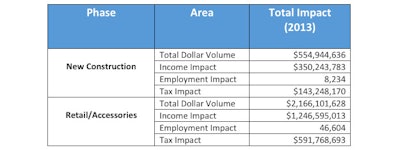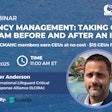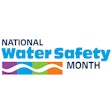The California Pool and Spa Association has received results of a study commissioned to determine the economic impact of the pool and spa industry in California. John Norwood, CPSA president, has issued the following report which includes an assessment of efforts to represent industry interests in the face of California’s ongoing drought:
“It’s the start of a new year for California, and even though it’s just beginning there is already a lot on the horizon for the California Pool and Spa Association, and for the pool and spa industry throughout California. The swimming pool and spa industry has endured a lot these last few years, and while things have been steadily improving as the economy and our state recovers, we still have a long way to go and new challenges to face. The ongoing drought has added to the difficulties that the economic downturn created, leading many water agencies to propose restrictions on or altogether prohibit the use of water by pools and spas in the mistaken belief that such measures would help conserve our dwindling water supplies. These proposed restrictions cast a wide net in the business landscape of California, affecting not only those directly employed in the pool and spa industry but those with indirect contact such as subcontractors, distributers, and material suppliers as well as retails of all backyard products, all of whom depend on pools and spas to stay in business.
Fortunately, CPSA has had tremendous success in 2014 in convincing water districts not to implement such restrictions, or in several cases to roll such restrictions back. Although we managed to come through 2014 relatively unscathed thanks to some hard work and the dedication of our members, there are still many challenges in the year ahead. The water outlook may have improved slightly with the recent rains in the month of December, but we know all too well that it was not enough rain to bring us out of the drought. Worse yet, forecasts indicate that the month of January will be relatively free of rain. We will need lots more rain to break out of the cycle entirely, and this means that short of the state receiving five or six big storms in the next couple of months the CPSA will be facing another year defending the industry from unfair and unwarranted restrictions that threaten our members and their livelihoods.
The key to success in 2014 was the proactive approach taken by CPSA. The association instituted a statewide education and public relations campaign to inform citizens and public policy makers on the real facts of water use by swimming pools and spas. We also launched the Let’s Pool Together campaign to demonstrate that the pool and spa industry can be part of the solution, not part of the problem. Building on this approach, CPSA commissioned an Economic Impact Study from the firm PK Data to more fully and completely understand the scope of the pool and spa industry’s footprint in California. PK Data is a research and consulting firm that specializes in the study of recreational water use, making them a perfect fit for our needs – namely a survey that covers the direct, indirect, and related economic impact of the entire pool and spa industry in the state. This was a wide-ranging project that encompasses the construction, retail, and related industries, as well as the tax revenues and employment numbers associated with pools and spas. And now that the data is in and has been compiled into one study, it is clear that the CPSA’s message regarding the importance of our industry to the state as a whole is supported by solid economic facts.
While there is too much data to reprint here in its entirety, even an overview of the total findings shows just how beneficial the pool and spa industry truly is to the California economy. In 2013, the year that was surveyed for the study, the pool and spa industry contributed over $5 billion to California’s economy, as well as 55,000 jobs.

The importance of these findings cannot be understated. The pool and spa industry has a significant, meaningful impact on the economy and strength of California, contributing billions of dollars and thousands of jobs even in a time when the industry is recovering from a significant downturn. As the study later states, while one of the statistics that is most reliable for measuring the industry known as housing starts are “slowly rebounding from the recession [sic] the upturn has not been fully realized in the swimming pool and hot tub industry.” And yet even contending with this fact, the swimming pool and spa industry is still a vital contributor to the economy, and it is crucial for California to ensure that these businesses are allowed to thrive and grow in their recovery.
These findings fully support the message that CPSA has been sharing with water districts and officials throughout the state that pools and spas must not be unfairly targeted by water restrictions and burdensome regulations. It is a fact that pools and spas do not waste water, and in fact they save a significant amount of water compared to lawns and traditional landscaping. Imposing restrictions on the water that can be used by pools and spas water districts threaten the livelihoods of small business that make up an important segment of the state’s economy. It is crucial to protect these businesses by sharing our findings and our message with those water districts, many of whom are under the mistaken impression that regulating pools and spas will conserve water, and the CPSA Economic Impact Study will be an important tool for that mission.
The year ahead contains many uncertainties, from how much rain the state will receive to whether the drought will improve or grow worse in the coming months. The CPSA is prepared to face these challenges head on and continue protecting and advocating for and industry that is a vibrant and vital part of our state.”
— John Norwood
CPSA, the California Pool and Spa Association, serves as the statewide public policy representative for the pool, spa, and hot tub industry, and advocates on behalf of industry interests before the California Legislature and state and local regulatory agencies, and for individual members dealing with enforcement issues.












































